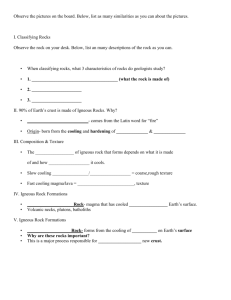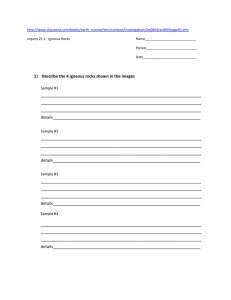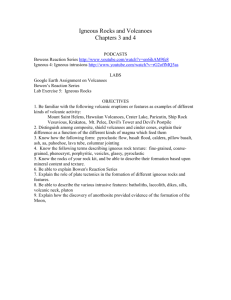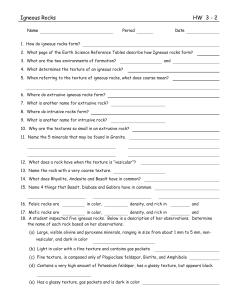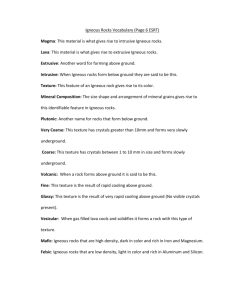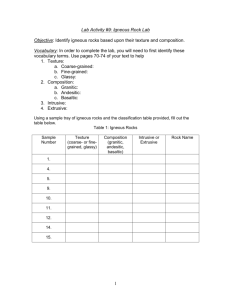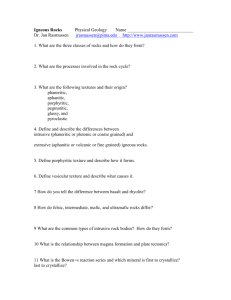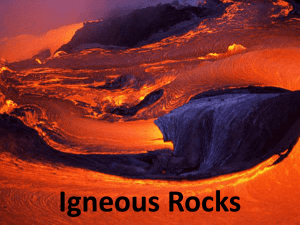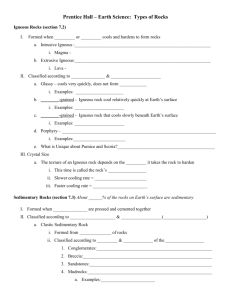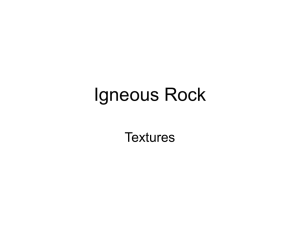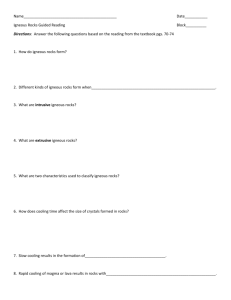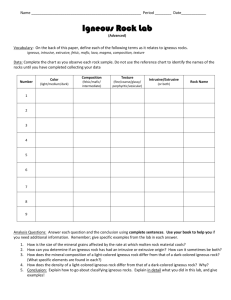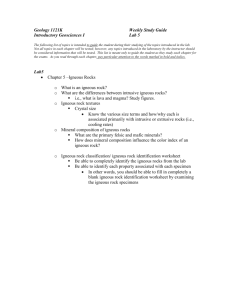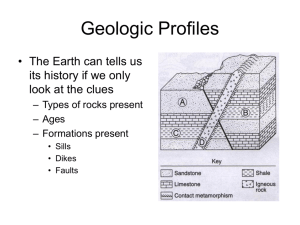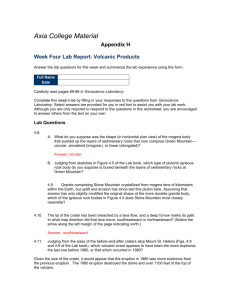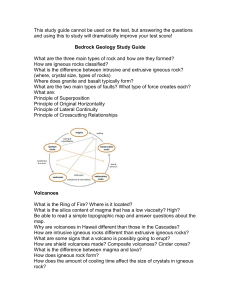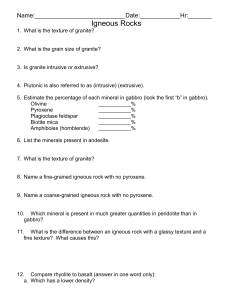QUIZ 6
advertisement
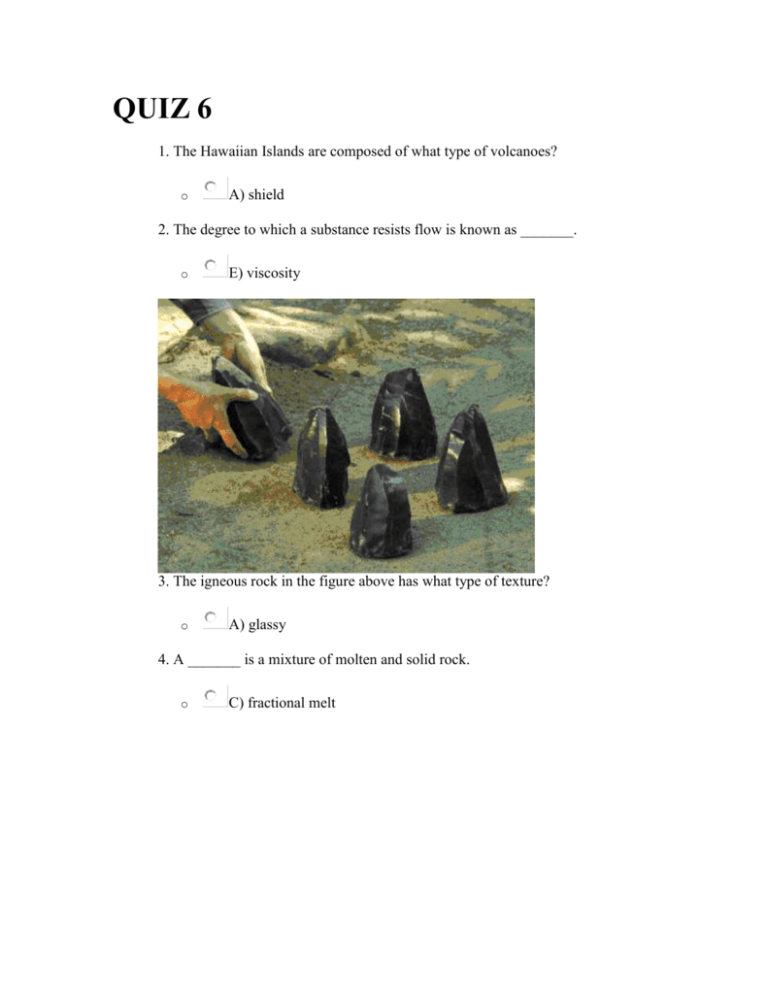
QUIZ 6 1. The Hawaiian Islands are composed of what type of volcanoes? o A) shield 2. The degree to which a substance resists flow is known as _______. o E) viscosity 3. The igneous rock in the figure above has what type of texture? o A) glassy 4. A _______ is a mixture of molten and solid rock. o C) fractional melt 5. The figure above is an igneous rock with what type of texture? o A) vesicular 6. The figure above has what type of texture? o D) porphyritic 7. Which of the following terms best describes the lava in the figure above? o A) low viscosity 8. The smallest type of tephra is known as _______. o B) volcanic ash 9. Fine grained igneous rocks have a _______ texture. o A) aphanitic 10. Tsunamies, tremors, lahar, changes in global temperature, and acid rain are secondary hazards associated with _____________ o B) earthquakes 11. Rock textures associated with rocks formed internally produce _________and externally form produce _______________ respectively. o A) large and small crystals 12. A sill is a ______________ intrusion, whereas a dike is a ______________ intrusion. o D) horizontal, vertical 13. Volcanoes are located in which type of plate boundaries? o C) convergent (subduction zone) True/False 14. The presence of higher amounts of water usually lowers the melting temperature of the rock. o TRUE 15. Hawaiian eruptions are extremely violent and produce large pyroclastic flows. o FALSE 16. Igneous rocks high in feldspars and silicates are known as felsic rocks. o TRUE 17. Vulcanian eruptions are not very explosive and only release ash 5km into the air. o FALSE 18. Igneous rocks with small crystals undergo slow cooling. o FALSE Fill-In-The-Blank 19. The most violent volcanic eruptions in history are classified as _______ eruptions. PLINIAN 20. When magma is injected horizontally between layers and solidifies, a _______ forms. SILL

